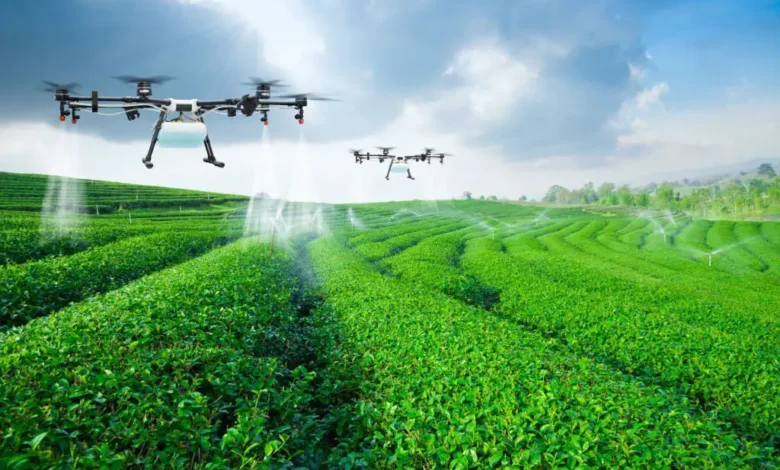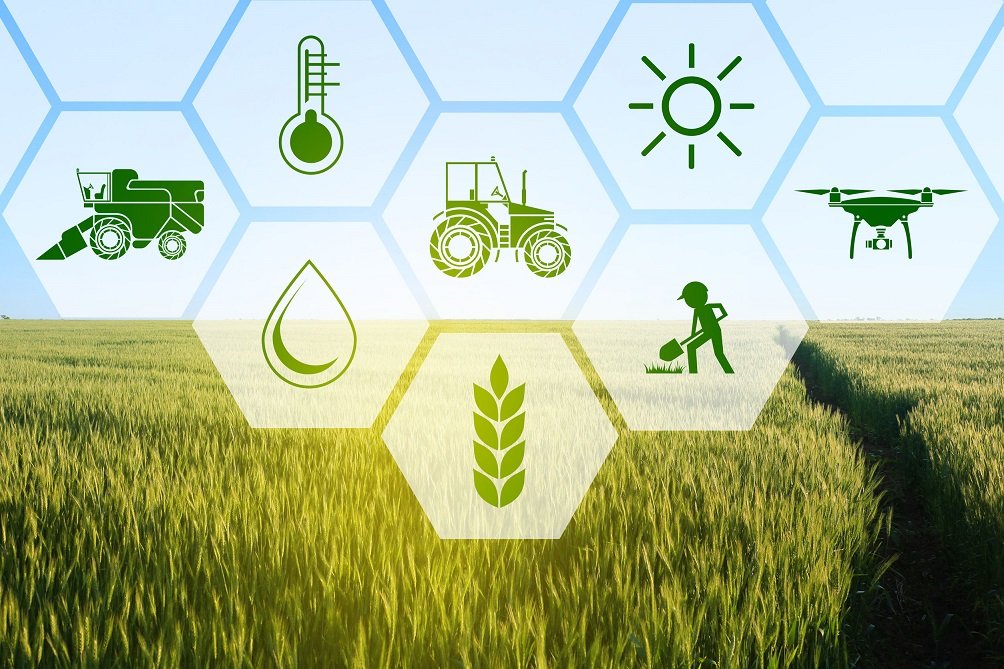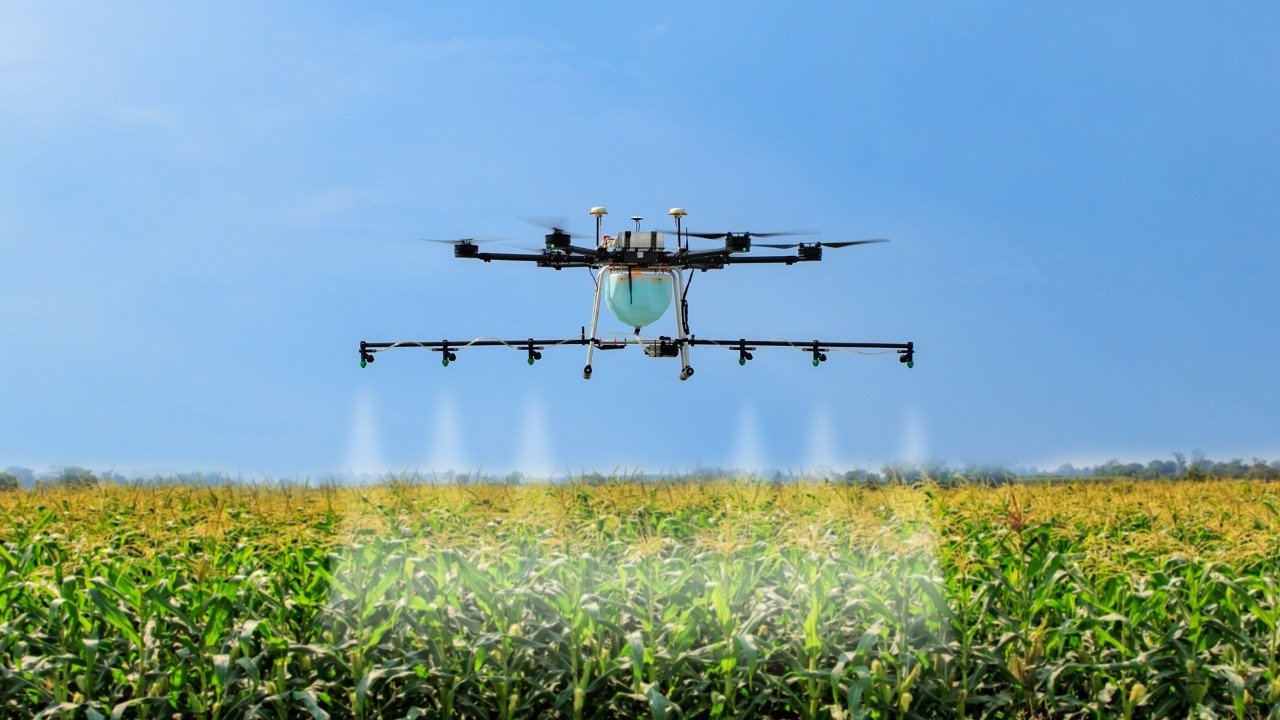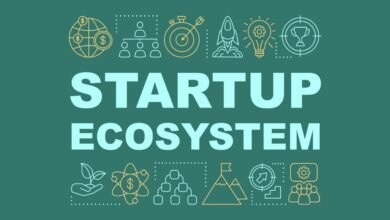The Potential of Drones in Pakistan’s Agriculture Sector

Drones, also known as unmanned aerial vehicles (UAVs), have revolutionized various industries with their ability to perform tasks efficiently and effectively. In recent years, the agricultural sector has started embracing drone technology to overcome the challenges it faces and to enhance productivity. Pakistan’s agriculture sector, which forms a significant part of the country’s economy, can greatly benefit from the integration of drones in its practices. In this article, we will explore the potential of drones in Pakistan’s agriculture sector in 2023 and the various ways in which they can revolutionize farming practices.
Pakistan’s agriculture sector plays a vital role in the country’s economic growth, contributing to employment, GDP, and export earnings. However, the sector faces numerous challenges, including inefficient farming methods, lack of data-driven decision-making, inadequate resource management, and the impact of climate change. These challenges hinder the sector’s growth and pose a threat to food security.
Read more: Reimagine Agriculture in Pakistan Acumen Draws up Key Player
Brief Overview of Pakistan’s Agriculture Sector

Pakistan is an agrarian economy, with the majority of its population directly or indirectly dependent on agriculture. The sector encompasses a wide range of activities, including crop cultivation, livestock farming, fisheries, and forestry. Major crops grown in Pakistan include wheat, rice, cotton, sugarcane, and maize. Livestock farming is also a significant component of the sector, with dairy, poultry, and meat production being major contributors.
Current Challenges in Pakistan’s Agriculture Sector
Pakistan’s agriculture sector faces several challenges that hinder its growth and productivity. These challenges include:
Outdated farming practices: Many farmers in Pakistan still rely on traditional farming methods, which are often inefficient and yield suboptimal results.
Inadequate access to information: Farmers lack access to real-time data and information on crop health, weather patterns, market prices, and best agricultural practices.
Limited resource management: Inefficient use of resources, such as water, fertilizers, and pesticides, leads to wastage and environmental degradation.
Climate change impact: Changing weather patterns, water scarcity, and increased pest attacks pose significant risks to crop production.
Ineffective pest and disease management: Lack of early detection and targeted intervention strategies result in crop losses and decreased yields.
High post-harvest losses: Insufficient storage and transportation infrastructure lead to significant post-harvest losses, affecting food security and farmer incomes.
Introduction to Drones
Drones are unmanned aircraft equipped with cameras, sensors, and other advanced technologies. They can be remotely operated or programmed to perform specific tasks autonomously. In agriculture, drones are used to collect data, monitor crop health, and perform various farming operations with precision and efficiency. These compact and agile devices can navigate through fields, capturing high-resolution images and collecting valuable data that can be analyzed to make informed decisions.
Benefits of Drones in Agriculture

Precision Farming
Drones enable precision farming by providing farmers with accurate and timely information about their crops. High-resolution aerial imagery helps identify variations in crop health, soil moisture levels, and nutrient deficiencies. This information allows farmers to take targeted actions, such as applying fertilizers or pesticides only where needed, optimizing resource usage and reducing costs.
Crop Health Monitoring
Drones equipped with multispectral or thermal cameras can capture detailed images of crops, enabling early detection of pests, diseases, and nutrient deficiencies. By identifying these issues at an early stage, farmers can take appropriate measures to mitigate the risks, preventing crop losses and improving overall yields.
Irrigation Management
Water is a scarce resource in many agricultural regions. Drones can analyze crop water requirements by assessing plant stress levels and soil moisture content. This data helps farmers optimize irrigation schedules, ensuring that crops receive the right amount of water at the right time. Efficient water management not only conserves resources but also improves crop health and productivity.
Crop Dusting
Traditional methods of crop dusting can be time-consuming, labor-intensive, and inefficient. Drones equipped with spraying systems can accurately apply fertilizers, pesticides, and herbicides to crops, reducing the amount of chemicals used and minimizing human exposure to harmful substances. The precise application of inputs also prevents overspraying and reduces environmental pollution.
Livestock Monitoring
Drones equipped with cameras and sensors can monitor livestock herds, helping farmers keep track of their animals’ health and behavior. They can identify sick or injured animals, detect predators, and locate lost livestock more efficiently. Livestock monitoring with drones enables proactive intervention and better management of animal health.
Soil Analysis
Accurate soil analysis is crucial for understanding soil health, fertility, and nutrient composition. Drones equipped with specialized sensors can collect soil samples from different areas of a field, providing detailed data for analysis. This information guides farmers in making informed decisions regarding soil management and the application of fertilizers and soil amendments.
Efficient Resource Management
By providing farmers with real-time data on crop health, soil conditions, and weather patterns, drones empower them to make data-driven decisions. This enables efficient resource management, reducing waste and optimizing productivity. Farmers can precisely allocate resources, such as water, fertilizers, and pesticides, based on the specific needs of different areas within their fields.
Successful Implementation of Drones in Agriculture in Other Countries
Several countries have successfully implemented drone technology in their agriculture sectors, showcasing the potential benefits and impact it can have. For example, in the United States, farmers have utilized drones for crop monitoring, aerial mapping, and targeted application of inputs. This has led to increased crop yields, reduced costs, and improved resource efficiency. Similarly, countries like Japan, Australia, and Brazil have integrated drones into their agriculture practices, experiencing enhanced productivity and sustainability.
Initiatives and Progress in Pakistan’s Agriculture Sector
In recent years, Pakistan’s agriculture sector has witnessed a growing interest in adopting modern technologies to overcome challenges and improve productivity. Various public and private organizations have initiated projects and research programs to explore the potential of drones in agriculture. These initiatives aim to provide farmers with access to drone technology, training, and data analytics tools to enhance their decision-making capabilities.
Potential of Drones in Pakistan’s Agriculture Sector
The integration of drones in Pakistan’s agriculture sector holds immense potential and can bring about significant transformations. Here are some key areas where drones can make a positive impact:
Increased Crop Yield
By providing real-time crop monitoring and targeted interventions, drones can help farmers maximize their yields. Early detection of pests, diseases, and nutrient deficiencies enables timely action, preventing crop losses and improving overall productivity.
Reduced Costs
Drones enable precise resource management, allowing farmers to optimize the use of fertilizers, pesticides, and water. By reducing input wastage, farmers can lower their production costs and increase profitability.
Improved Crop Quality
Timely detection of crop issues and targeted interventions result in healthier and higher-quality produce. Drones help farmers maintain crop health, reduce the presence of contaminants, and ensure compliance with quality standards.
Environmental Sustainability
By minimizing the use of chemicals and optimizing resource utilization, drones contribute to environmentally sustainable agriculture practices. Reduced chemical usage lowers pollution levels, while efficient resource management conserves water and minimizes environmental impact.
Challenges and Limitations of Drone Technology
While the potential of drones in agriculture is significant, several challenges and limitations need to be addressed for their widespread adoption:
Cost: Initial investment in drones and related equipment can be expensive for small-scale farmers. The affordability and accessibility of drone technology need to improve to make it more inclusive.
Regulatory Framework: Establishing a comprehensive regulatory framework for drone operations is crucial to ensure safety, privacy, and adherence to airspace regulations. Clear guidelines and licensing procedures need to be in place to prevent misuse and ensure responsible drone usage.
Skill Development: Farmers and operators require training to effectively operate and utilize drone technology. Skill development programs and awareness campaigns are necessary to educate stakeholders about the benefits and best practices associated with drones in agriculture.
Data Management and Analysis: Collecting vast amounts of data from drone flights requires robust data management and analysis systems. Efficient data processing, interpretation, and integration with decision support systems are vital for effective utilization of drone-generated information.
Regulatory Framework for Drone Use in Pakistan
Pakistan’s Civil Aviation Authority (CAA) has formulated regulations and guidelines for drone operations in the country. These regulations focus on safety, privacy, and national security concerns. Drone operators are required to obtain appropriate licenses and permissions, adhere to airspace restrictions, and ensure compliance with privacy laws. The regulatory framework aims to promote responsible drone usage while mitigating potential risks and ensuring public safety.
Read more: Reimagine Agriculture in Pakistan Acumen Draws up Key Player
Conclusion
Drones have the potential to revolutionize Pakistan’s agriculture sector by addressing existing challenges and improving productivity. With their ability to provide real-time data, enhance decision-making, and optimize resource usage, drones can help farmers achieve higher yields, reduce costs, and contribute to environmental sustainability. However, addressing challenges related to affordability, regulation, skill development, and data management is essential for the successful implementation of drone technology in Pakistan’s agriculture sector.
FAQs
Are drones widely used in Pakistan’s agriculture sector?
While the use of drones in Pakistan’s agriculture sector is gaining traction, it is not yet widespread. However, various initiatives and projects are underway to promote their adoption and create awareness among farmers.
How do drones help in precision farming?
Drones provide farmers with accurate and real-time data on crop health, soil conditions, and nutrient deficiencies. This enables precise resource allocation, such as targeted application of fertilizers and pesticides, resulting in improved efficiency and productivity.
Can drones replace traditional farming methods?
Drones are a valuable tool in modern agriculture, but they cannot replace traditional farming methods entirely. They complement existing practices by providing farmers with actionable insights and helping them make informed decisions for better results.
What are the safety concerns associated with drones in agriculture?
Safety concerns include the risk of drone collisions with other aircraft, privacy issues, and potential harm to humans or animals if the drones are not operated responsibly. Adhering to regulations, ensuring proper training, and practicing responsible drone usage mitigate these risks.
What is the cost of implementing drone technology in agriculture?
The cost of implementing drone technology in agriculture varies depending on factors such as the type of drones used, additional equipment required, and data analysis systems. While initial investment costs can be significant, the long-term benefits, such as increased yields and reduced costs, can outweigh the initial expenses.











